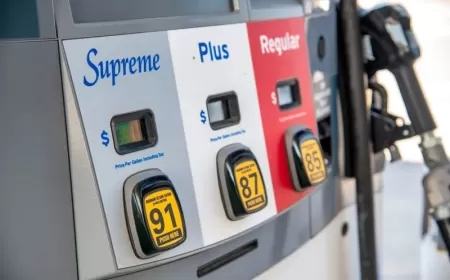"Drill Baby Drill" Stalls as U.S. Oil Faces Price Slump and Tariff Woes
"Drill baby drill" hits a wall—U.S. oil producers cut back as prices fall and tariffs raise costs across the energy sector

When President Donald Trump took office, one of his first moves was to ramp up domestic oil and gas production. The message was clear: remove the red tape and let American energy thrive. But just months into his term, that promise is running into harsh economic reality.
Despite the United States leading the world in oil production—pumping around 13.55 million barrels per day—companies across the sector are now signaling plans to scale back. A sharp fall in oil prices and added pressure from new tariffs have clouded the outlook for U.S. producers, many of whom say drilling just isn’t worth it if crude prices stay low.
Lower Prices Trigger Tough Choices
Since Trump’s inauguration, U.S. crude has dropped from about $78 a barrel to nearly $55. That’s a problem for producers who say they need at least $65 to keep drilling profitable. Below that, it’s tough to justify new projects, let alone maintain current operations.
Making matters worse, new tariffs have made drilling equipment and steel more expensive. Much of that material comes from overseas, including China, and energy companies are now feeling the squeeze from both higher costs and lower returns.
OPEC’s Move Adds More Pressure
Just days after the administration introduced fresh trade tariffs, OPEC and its allies announced a plan to increase oil output. That announcement added even more pressure on prices, pushing them to levels not seen since the early months of the pandemic. The U.S. Energy Information Administration lowered its forecast for crude prices in 2025 to $63.88 per barrel—down sharply from its earlier projection of $70.68.
Layoffs and Fewer Rigs on the Horizon
Even before the recent downturn, big names like Chevron and SLB had begun cutting jobs to reduce expenses. The U.S. oil rig count, which once stood at nearly 900 in 2018, has now fallen to just over 500. And industry insiders warn that if oil prices stay in the $50s, the rig count could drop even further—possibly by half.
“You can’t expect companies to keep drilling if they’re losing money,” said Roe Patterson of Marauder Capital, a firm that invests in oilfield services. “Right now, OPEC’s gain is looking like America’s loss.”
Cost of Doing Business Keeps Climbing
It’s not just the price of oil that’s the issue. The costs tied to running a well—things like steel, parts, and machinery—are also rising due to tariffs. Companies like Premium Oilfield Technologies have started passing those costs directly to their customers.
While drilling techniques have become more efficient in recent years, many in the industry believe the big productivity gains have already been made. Future improvements, they say, won’t be enough to offset the rising cost of materials and ongoing volatility in oil prices.
Margins Are Thin, Even in the Best Spots
Even in the Permian Basin, where costs are lowest, companies need higher prices to cover things like dividends and debt. In other regions, like North Dakota, it can take at least $57 a barrel just to break even on a new well.
Research shows that when all expenses are factored in—operations, repayments, and shareholder obligations—many firms need prices well above $60 to stay afloat. And the price floor at which companies consider shutting down production has climbed to $41 a barrel, up from $39 last year.
Producers Shift Focus Away from Growth
After years of chasing rapid expansion, many energy companies are now turning their attention to financial discipline. Investors want stable returns, not aggressive drilling. If oil prices don’t rebound soon, more companies are expected to cut back even further.
Bryan Sheffield, founder of energy investment firm Formentera Partners, said the message is clear: “If prices fall into the upper $50s, producers will have no choice. Budgets will be cut, and rigs will come offline.”
For now, America’s oil sector is caught between falling prices, rising costs, and global competition. The push to “drill, baby, drill” has run headfirst into a much more complicated energy landscape.
Also Read: Oil and Stocks Show Unusual Link in 2025 as Trump Tariffs Shake Global Markets





























































